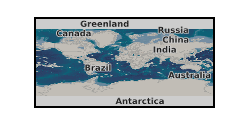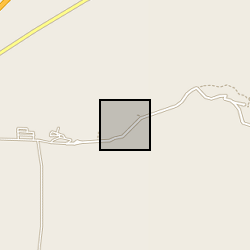Speleothems
Type of resources
Available actions
Topics
Keywords
Contact for the resource
Provided by
Years
Formats
Representation types
Update frequencies
-

speleothem data - ICP-AES (Inductively coupled plasma atomic emission spectroscopy) , incomplete soil acidity experiments - soil water chemistry after acidification - incomplete
-

Annual lamina thickness (microns), lamina count, and age model (Ma, years) for the Early Pleistocene (Lines 1 and 2) and early Holocene speleothems from Buffalo Cave, South Africa. The samples, methods and results are described in full in: Hopley, P. J. et al. (2018) Orbital precession modulates interannual rainfall variability, as recorded in an Early Pleistocene speleothem. Geology. DOI:10.1130/G45019.1
-

This data set contains a record of nitrate concentrations and isotopic composition present within the drip waters and speleothem carbonate deposits of Cueva-cubío del Llanío, northern Spain. Data were collected between 2018 to 2020, and specifically address the nitrate composition of the cave drip waters, pool waters, rocks, soil, vegetation and contemporary speleothem carbonate. Calculations are also undertaken to assess the partitioning of nitrate between cave drip water and speleothem carbonate deposits. Data pertaining to speleothem nitrate content also extend to other cave locations (Pooles cavern, UK; Brown's Folly Mine, UK, Ease Gill Caverns, UK; Rukiesa cave, Ethiopia; Cueva Perlas, N. Spain). Sample analysis was performed at Lancaster University and the UK Centre for Ecology and Hydrology under NERC facility access grant LSMSF\CEH\L\125\11\2018. The data presented represent the full underlying dataset to Wynn et al., 2021, Chemical Geology: DOI.org/10.1016/j.chemgeo.2021.120172.
-

Cave drip water, pool water and PO4 (phosphate) dosing experiments from Cueva Llanio, Cantabria, N. Spain and cave speleothem carbonate from global cave systems. The data set includes stable oxygen and hydrogen isotope data from the cave drip waters, cave water temperatures and the results of phosphate dosing experiments. Phosphate oxygen isotope data is presented from the dosing experiments, direct extractions from the cave water and from a number of speleothem calcite samples from global collaborators. Water samples were collected from Cueva Llanio over 3 field trips 2023-24.
 NERC Data Catalogue Service
NERC Data Catalogue Service